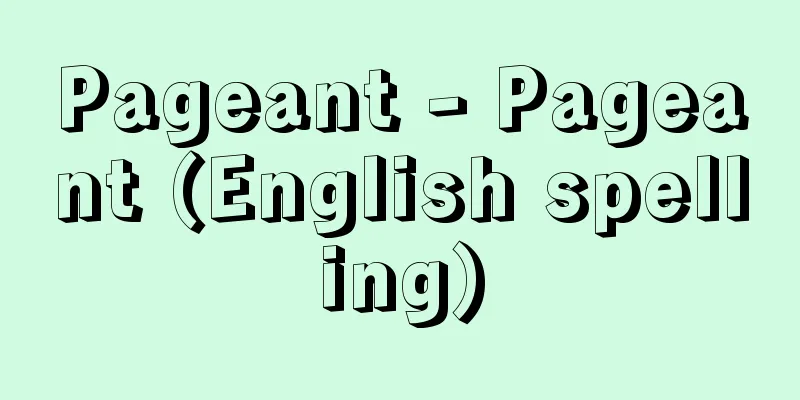Champa - Champa (English spelling)

|
An Indonesian Cham people kingdom that existed on the eastern coast of the Indochina Peninsula, stretching from the Hue (Yue) region of Vietnam to the southern part of the country. According to Chinese historical documents, it began when the Tu Hou Ku Lian invaded Xianglin County, Rinan County, around 137 AD, and the country's name was called Linyu in Chinese. However, from the mid-9th century onwards it was called Zhancheng. Champa was a kingdom of Indian culture, and its name is a Sanskrit term. A Sanskrit inscription from the late 4th century unearthed in Quang Nam Province revealed the penetration and establishment of Indian culture. The inhabitants lived on the narrow coastal plain at the foot of the Trong Son Mountains, and the country was divided into several regions. The Champas advanced northward to seize the vast and fertile plains of northern Vietnam, and continued to invade the Hoa Son region (northern Binh Chi Tien Province). However, from the 5th century onwards, they suffered a series of defeats, and in 1471, their capital Vijaya fell to an attack by the Vietnamese Lê Dynasty's Sacred Sect, and they were on the road to demise. Today, the Cham people remain in the Phan Rang region of southern Vietnam, but some have converted to Islam. At the My Son ruins in the Hue region, the remains of a Hindu temple from that time, as well as beautiful and elegant carvings and gables remain, and the Cham towers are particularly famous. [Yoshiaki Ishizawa] [Reference] |Source: Shogakukan Encyclopedia Nipponica About Encyclopedia Nipponica Information | Legend |
|
インドシナ半島東岸、ベトナムのフエ(ユエ)地方から南部にかけて存在したインドネシア系のチャム人の王国。中国の史料によれば、土侯の区憐(くりん)が137年ごろ日南郡象林県に侵入したのが始まりで、国名を中国では林邑(りんゆう)とよんだ。ただし9世紀中ごろ以降は占城(せんじょう)とよんだ。チャンパはインド文化系の王国で、サンスクリット語の呼称である。クアンナム省から出土した4世紀後半のサンスクリット語の碑文により、インド文化の浸透・定着が明らかになった。 住民はチョンソン山脈山麓(さんろく)の狭い沿岸平野に住み、国内はいくつもの地域に分立していた。チャンパは、ベトナム北部の広大で肥沃(ひよく)な平野部を略取しようとして北進を目ざし、ホアソン地方(ビンチティエン省北部)へ侵攻を続けた。しかし、5世紀からは敗北の連続で、1471年にはベトナムの黎(れい)朝(レ朝)聖宗の攻撃により首都ビジャヤが陥落し、滅亡への道をたどった。現在チャム人はベトナム南部のファンラン地方などに残っているが、一部はイスラム化した。フエ地方のミソン遺跡には当時のヒンドゥー教系の寺院址(し)、美しい上品な彫刻・破風(はふ)が残っており、とくにチャムの塔は有名である。 [石澤良昭] [参照項目] |出典 小学館 日本大百科全書(ニッポニカ)日本大百科全書(ニッポニカ)について 情報 | 凡例 |
Recommend
Warm water mass
A warm water eddy is a mass of warmer seawater sca...
Harpoon
A fishing gear used to catch fish and shellfish b...
Blood Snapper - Evynnis japonica
A marine fish of the Sparidae family in the order ...
Ogawa Harits
Year of death: 4th year of Enkyo, 6th year of Enky...
Dynamis
…It is translated as “reality,” “actual state,” “...
Chrysanthemum paludosum (English spelling) Chrysanthemum paludosum
…[Munemitsu Yanagi] [Mitsuru Hotta]. … *Some of t...
Phronimidae
…A general term for small planktonic amphipods wi...
Non-war argument - Hisenron
It particularly refers to anti-war and peace state...
Kasori Shell Mound
This Jomon period site is located in Sakuragicho, ...
Ushin
It is also called "kokoro ari" (having ...
Georges Duhamel
French novelist. Born in Paris. Initially aiming ...
Uchimono (Japanese sweets) - Uchimono
…However, since “Echi no Yuki” and “Yamakawa” do ...
The three major classes
The 18th century physiocratic philosopher Francis ...
Tragelaphinae
…There are about 84 species in 27 genera, which c...
Ingarra - Ingarra
…Ancient city of Sumer. The ruins are located in ...









